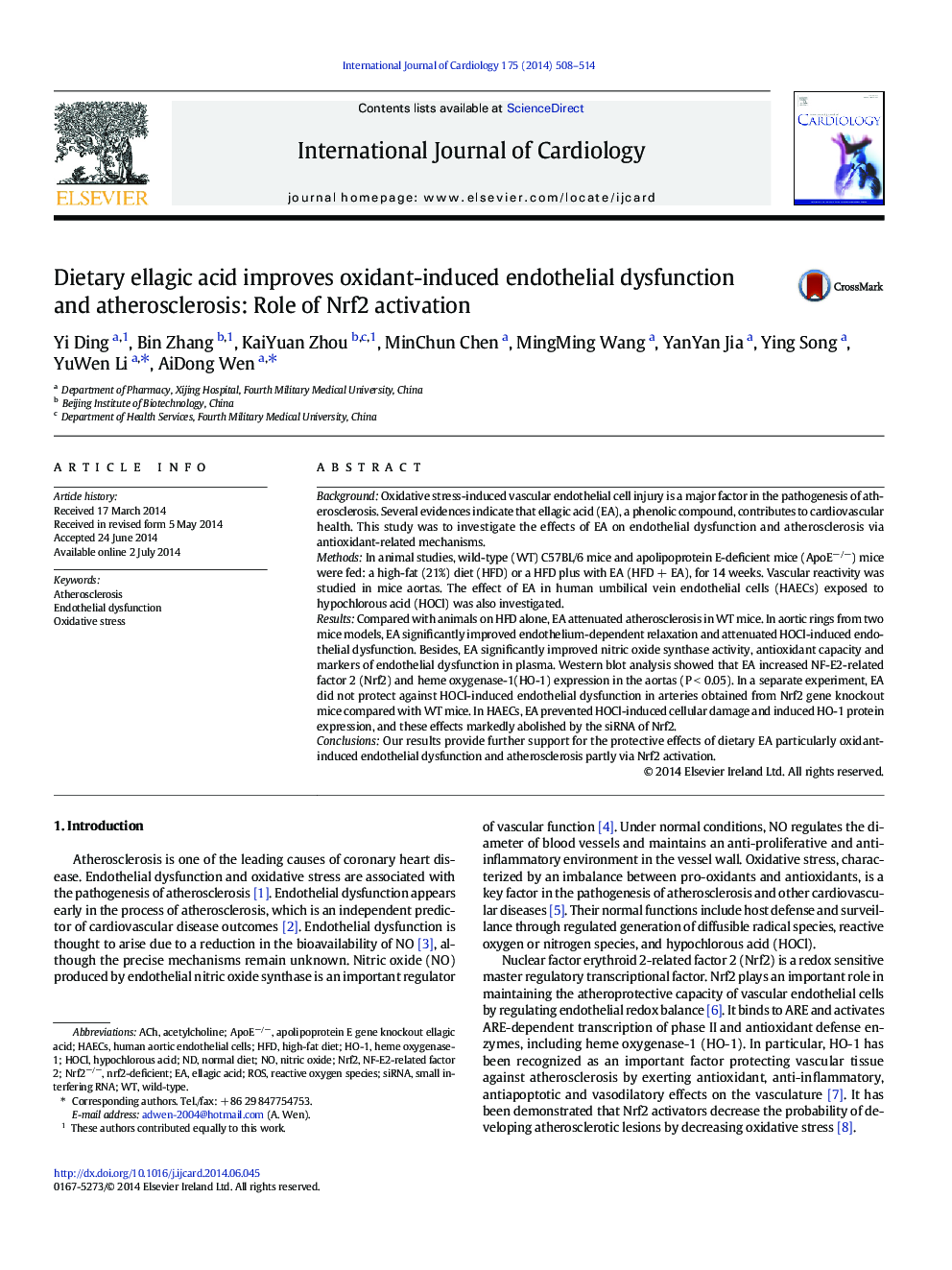| Article ID | Journal | Published Year | Pages | File Type |
|---|---|---|---|---|
| 5970090 | International Journal of Cardiology | 2014 | 7 Pages |
â¢The effect of EA in two mice models of atherosclerosis was investigated.â¢The effect of EA in HAECs exposed to HOCl was investigated.â¢EA improves oxidant-induced endothelial dysfunction and atherosclerosis.â¢Nrf2 activation by EA plays an important role in the effect.
BackgroundOxidative stress-induced vascular endothelial cell injury is a major factor in the pathogenesis of atherosclerosis. Several evidences indicate that ellagic acid (EA), a phenolic compound, contributes to cardiovascular health. This study was to investigate the effects of EA on endothelial dysfunction and atherosclerosis via antioxidant-related mechanisms.MethodsIn animal studies, wild-type (WT) C57BL/6 mice and apolipoprotein E-deficient mice (ApoEâ/â) mice were fed: a high-fat (21%) diet (HFD) or a HFD plus with EA (HFDÂ +Â EA), for 14Â weeks. Vascular reactivity was studied in mice aortas. The effect of EA in human umbilical vein endothelial cells (HAECs) exposed to hypochlorous acid (HOCl) was also investigated.ResultsCompared with animals on HFD alone, EA attenuated atherosclerosis in WT mice. In aortic rings from two mice models, EA significantly improved endothelium-dependent relaxation and attenuated HOCl-induced endothelial dysfunction. Besides, EA significantly improved nitric oxide synthase activity, antioxidant capacity and markers of endothelial dysfunction in plasma. Western blot analysis showed that EA increased NF-E2-related factor 2 (Nrf2) and heme oxygenase-1(HO-1) expression in the aortas (PÂ <Â 0.05). In a separate experiment, EA did not protect against HOCl-induced endothelial dysfunction in arteries obtained from Nrf2 gene knockout mice compared with WT mice. In HAECs, EA prevented HOCl-induced cellular damage and induced HO-1 protein expression, and these effects markedly abolished by the siRNA of Nrf2.ConclusionsOur results provide further support for the protective effects of dietary EA particularly oxidant-induced endothelial dysfunction and atherosclerosis partly via Nrf2 activation.
